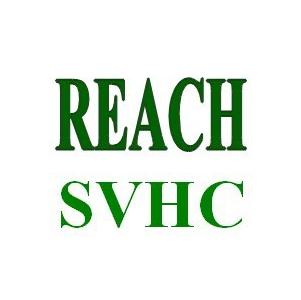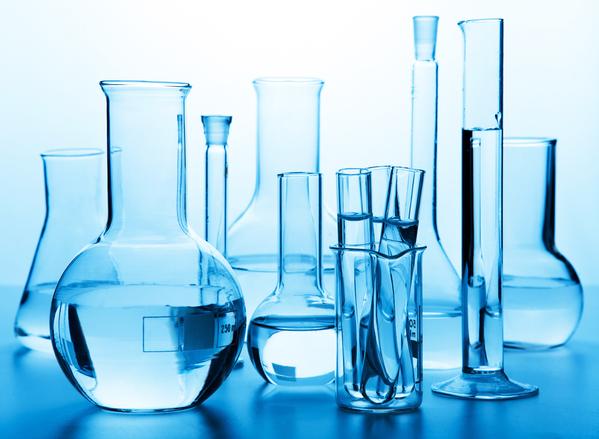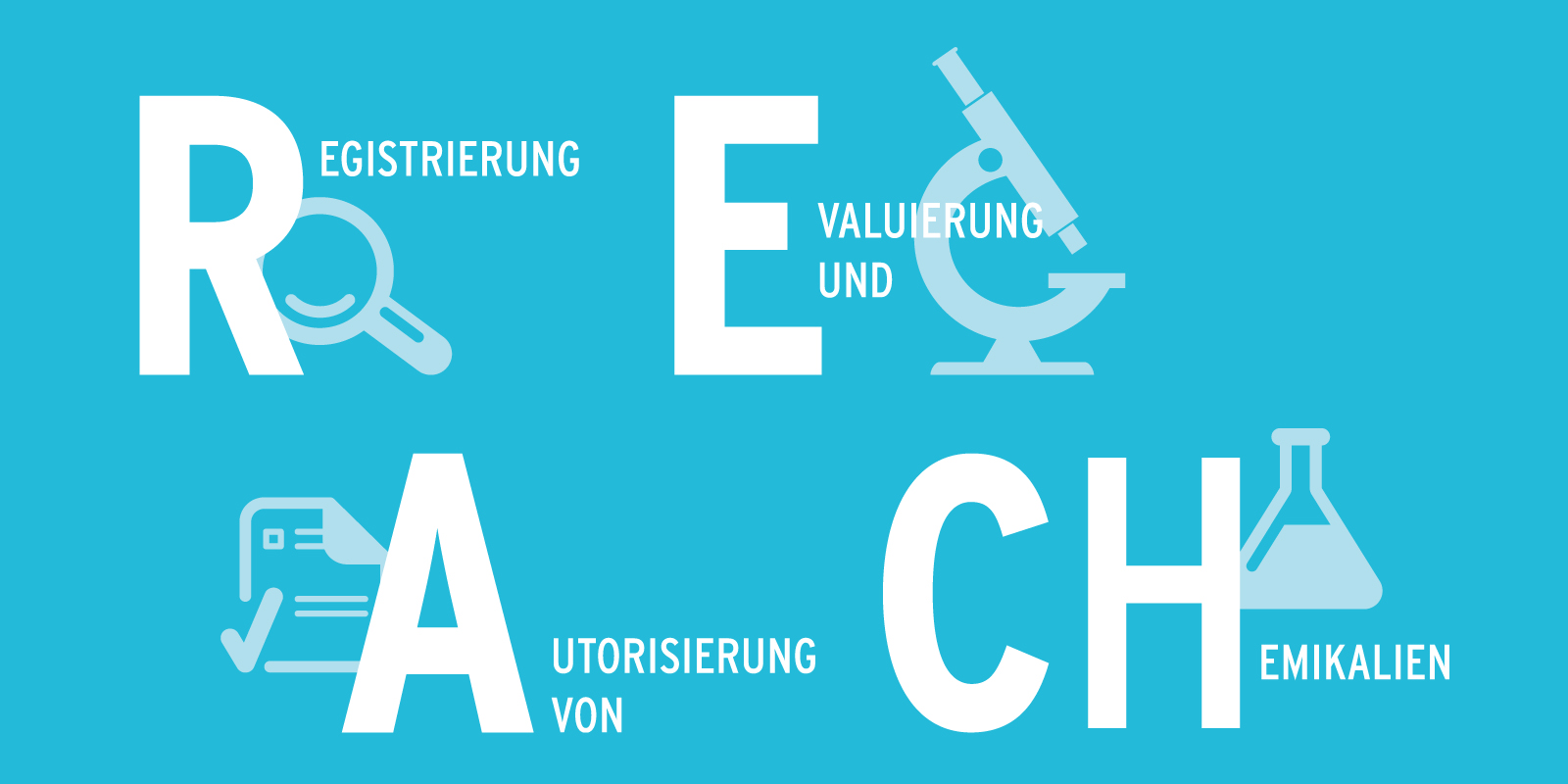REACH detection
1. The meaning of REACH detection
REACH is the abbreviation of REGULATION concerning the Registration, Evaluation, Authorization and Restriction of Chemicals, which was established by the European Union and implemented on June 1, 2007. Regulatory system.

This is a proposal for regulations involving the production, trade, and use of chemicals. The regulations aim to protect human health and environmental safety, maintain and improve the competitiveness of the EU chemical industry, and develop innovative capabilities for non-toxic and harmless compounds to prevent market fragmentation. , increase the transparency of the use of chemicals, promote non-animal experiments, and pursue sustainable social development. REACH established the idea that society should not introduce new materials, products or technologies if their potential hazards are not known with certainty.
REACH certification
2. Main content of REACH regulations
◆ Registration All chemical substances whose annual production or import volume exceeds 1 ton shall be registered, and chemical safety reports shall also be submitted for chemical substances whose annual production or import volume exceeds 10 tons.
◆ Evaluation (Evaluation) includes file evaluation and substance evaluation. Dossier evaluation is to verify the completeness and consistency of the registration dossier submitted by the business. Substance assessment is to determine the risk of chemical substances to human health and the environment.
◆ Authorisation Authorisation authorises the production and import of chemical substances with certain hazardous properties that attract people‘s attention, including CMR, PBT, vPvB, etc.
◆ Restriction If it is believed that a substance, preparation or article is manufactured, placed on the market or used to cause risks to human health and the environment that cannot be adequately controlled, its production or import within the EU will be restricted.
3. Responsibilities and Obligations of Articles in REACH Regulations
◆ If the product contains intentionally released substances, and the annual export volume of the substances is greater than 1 ton, registration is required.
◆ If the product does not contain intentionally released substances:
1. If the product contains substances of very high concern (ie SVHC), and the content is less than 0.1%, there is no need to notify and actively transmit information, but if the importer or consumer requests it, it is obliged to provide relevant information;
2. If the product contains SVHC, and the content is greater than 0.1%, and the annual export volume is less than 1 ton, the downstream importer must be notified and relevant information transmitted, and relevant certification documents must be issued at the same time;
3. If the product contains SVHC, and the content is greater than 0.1%, and the annual export volume is greater than 1 ton, it must be notified to ECHA;
4. At the request of the consumer, all suppliers of the article shall provide the consumer with sufficient information available to them within 45 days of receipt of the request to enable the safe use of the article. This information includes at least the name of the substance.

reach test items
On January 15, 2019, the European Chemicals Agency ECHA issued a notice that the 20th batch of 6 substances was added as substances of very high concern, including four polycyclic aromatic hydrocarbon substances, one phenol substance, and another substance. It was also included for its endocrine disrupting properties, and the SVHC list was officially updated to 197 items.
Note: Currently EU REACH SVHC has been updated to 197 items, you can click the link to view http://echa.europa.eu/candidate-list-table
◆ Restricted Substances
Namely Annex 17 of the REACH Regulation, which is a restriction on the manufacture, placing on the market and use of certain hazardous substances, preparations and articles, and is an important work content for articles other than SVHC. The European Union‘s old regulatory regulations on restricted substances on June 1, 2009 Directive 76/769/EEC is repealed, and all relevant regulations are subsumed into REACH regulations for unified implementation. Any substance, whether by itself or contained in preparations or articles, must be restricted within the EU as long as the use of the substance presents an unacceptable risk to human health and the environment. Regulation.
3. What is SVHC
Substances of high concern with one or more of the following hazardous properties according to Article 57 of the REACH Regulation:
(1) Class 1, Class 2 carcinogenic, teratogenic and reproductive toxic substances, namely CMR1/2 substances;
(2) Persistent, bioaccumulative and toxic substances, namely PBT substances;
(3) Substances with high persistence and high bioaccumulation, namely vPvB substances;
(4) It has endocrine disrupting properties, or is persistent, bioaccumulative and toxic, or has high persistence and high bioaccumulation but does not meet the criteria of 2 and 3. At the same time, there is scientific evidence to prove that it is harmful to humans or the environment. Seriously affecting substances.
1. When the product contains SVHC, the enterprise needs to fulfill its responsibilities and obligations
◆ When selling as a substance, it is necessary to provide SDS (Safety Data Sheet) to downstream users.
◆ As a substance in a mixture (preparation), when the content of this substance is greater than or equal to 0.1%, it is necessary to provide SDS to downstream users.
◆ When the quality percentage of SVHC in the article is greater than 0.1%, the recipient of the article or at the request of the consumer must provide sufficient information, including the name of the substance and its content, free of charge within 45 days.
◆ For SVHCs listed before December 1, 2010, if the quality percentage concentration in the article exceeds 0.1% and the total amount is greater than 1 ton/year, the obligation to notify ECHA must be completed on June 1, 2011. 2010 For SVHCs listed on the list after December 1, 2009, if they meet the notification requirements, they must complete the notification within 6 months after being listed.

2. SVHC notification
On June 1, 2007, the EU REACH regulations - "Registration, Evaluation, Authorisation and Restriction of Chemicals" "Registration, Evaluation, Authorization and Restriction of Chemicals" regulations came into effect. Responsibility is the statute that has so far had a wide-ranging impact.
The REACH Regulation Annex XIV Candidate List is the SVHC list. The regulation stipulates that the manufacturer or importer of the article should notify ECHA of substances of very high concern (SVHC) that meet the following two conditions:
◆The total content of SVHC substances in the article exceeds 1t/y/manufacturer or importer;
◆The total content of SVHC substances in the article exceeds the concentration of 0.1% in terms of mass fraction.
3. Who needs to be notified
◆ EU manufacturer
◆ EU importer
◆ Non-EU manufacturers (must be commissioned by an OR representative)
4. When to notify
◆For substances listed on the SVHC list before December 1, 2010, the notification must be submitted within 6 months from June 1, 2011;
◆ For substances listed on the SVHC list after December 1, 2010, notification must be submitted within 6 months from the date of publication.
4. Why should REACH be notified?
The EU implements REACH regulations on domestic circulation products. Products in the EU must fulfill the obligations of the REACH regulation before they can be legally produced or imported. Countries have adopted strict supervision and punishment measures in response to REACH regulations and legislation. EU customs can conduct REACH compliance reviews. If REACH regulations are violated, they will face product recalls, fines and even imprisonment.
CPSIA Testing California 65 Testing REACH Testing Ecological Textile Testing Textile Clothing Testing Leather Shoes Leather Goods Testing Electronics Testing Jewelry Testing Toys Testing Sports Equipment Testing Furniture Materials Testing Food Contact Materials Testing Packaging Materials Testing Salt Spray Corrosion Testing Metal Component Analysis Formula Component Analysis
5. REACH detection mode
REACH testing is generally carried out in a mixed test method, that is, all metal materials of the product are mixed into one material, and non-metallic materials are mixed into one material and tested separately.
6. REACH registration regulations
Substances listed on the European Inventory of Existing Commercial Chemicals (EINECS), which have been produced in the European Union (including countries, joined on 1 January 2007) but have not been placed on the EU market after 1 June 1992 Substances, which are identified as ‘Substances that are not long-chain polymers‘ For these substances, the following deadlines must be submitted at the time of registration:
November 30, 2010
Deadline for registration of substances produced or imported at 1,000 tons or more per year, carcinogenic, mutagenic or toxic reproductive substances more than 1 ton per year, and 100 tons per year of aquatic or environmental hazardous substances.
May 31, 2013
Deadline for registration of substances produced or imported at 100-1000 tons per year.
May 31, 2018
Deadline for registration of substances produced or imported in 1-100 tons per year.
All substances that do not meet any standard phase substances are considered non-phased substances, usually, non-phased substances have not been manufactured, marketed or used in the EU before 1 June 2008, according to Directive 67/548 /EEC unless they are notified.
Potential manufacturers and importers of non-phased substances must submit enquiries to ECHA and subsequently register the substance under REACH before they can manufacture or import the substance.
All substances notified under Directive 67/548/EEC (also known as NONS) are considered to be registered under REACH and ECHA has registered no. of all notifications. Employers can request a registration number from a notification from ECHA.
How does REACH test determine whether it has passed or failed?
Like other chemical tests, REACH test is also an important indicator for judging the environmental performance of products, but the question is, how does REACH test pass? In fact, the reach Act is aimed at controlling the element weight of manufacturers exporting to the EU for one year, so a single exceeding the standard will not become a stumbling block for exporting to the EU, as long as the weight can be well controlled.





